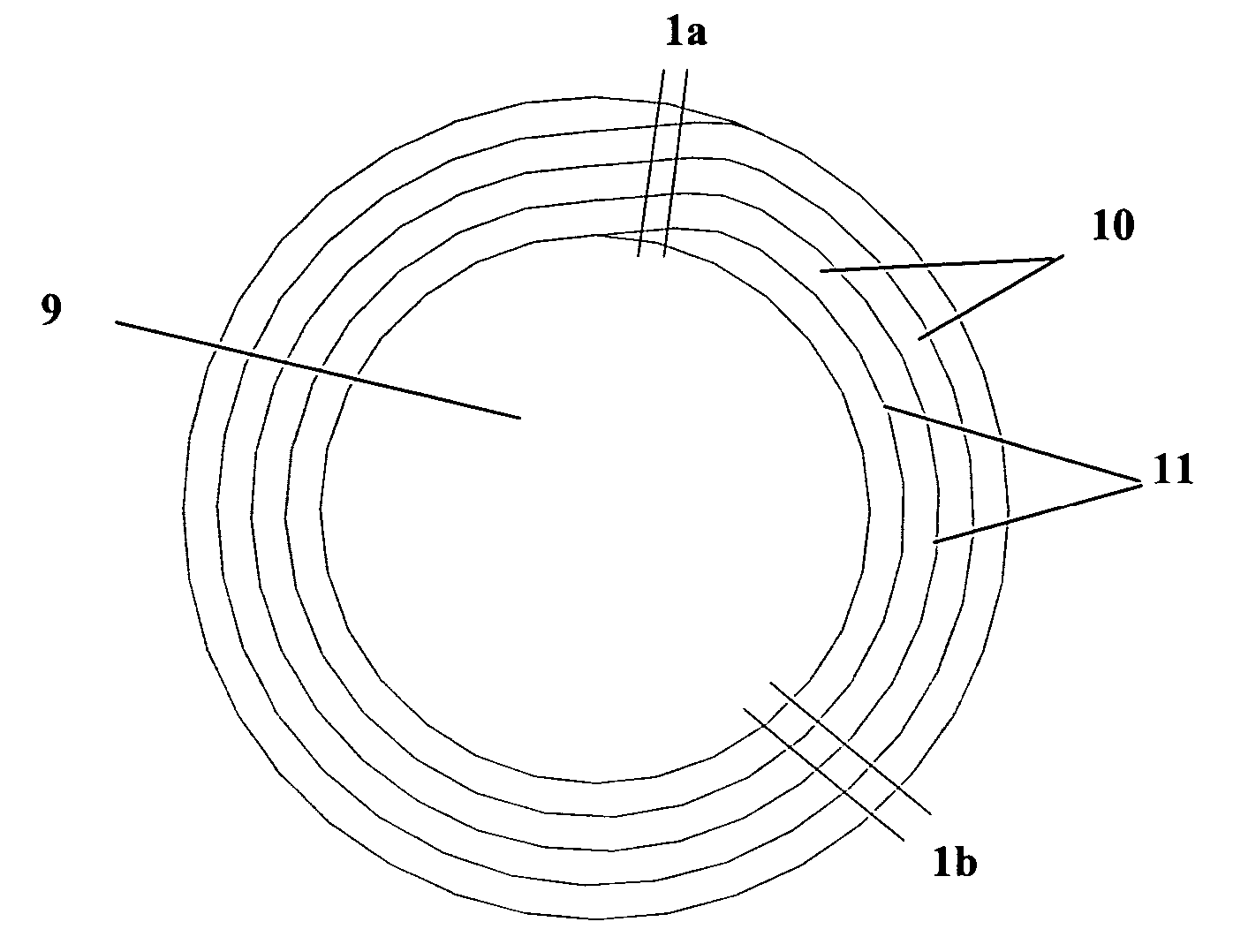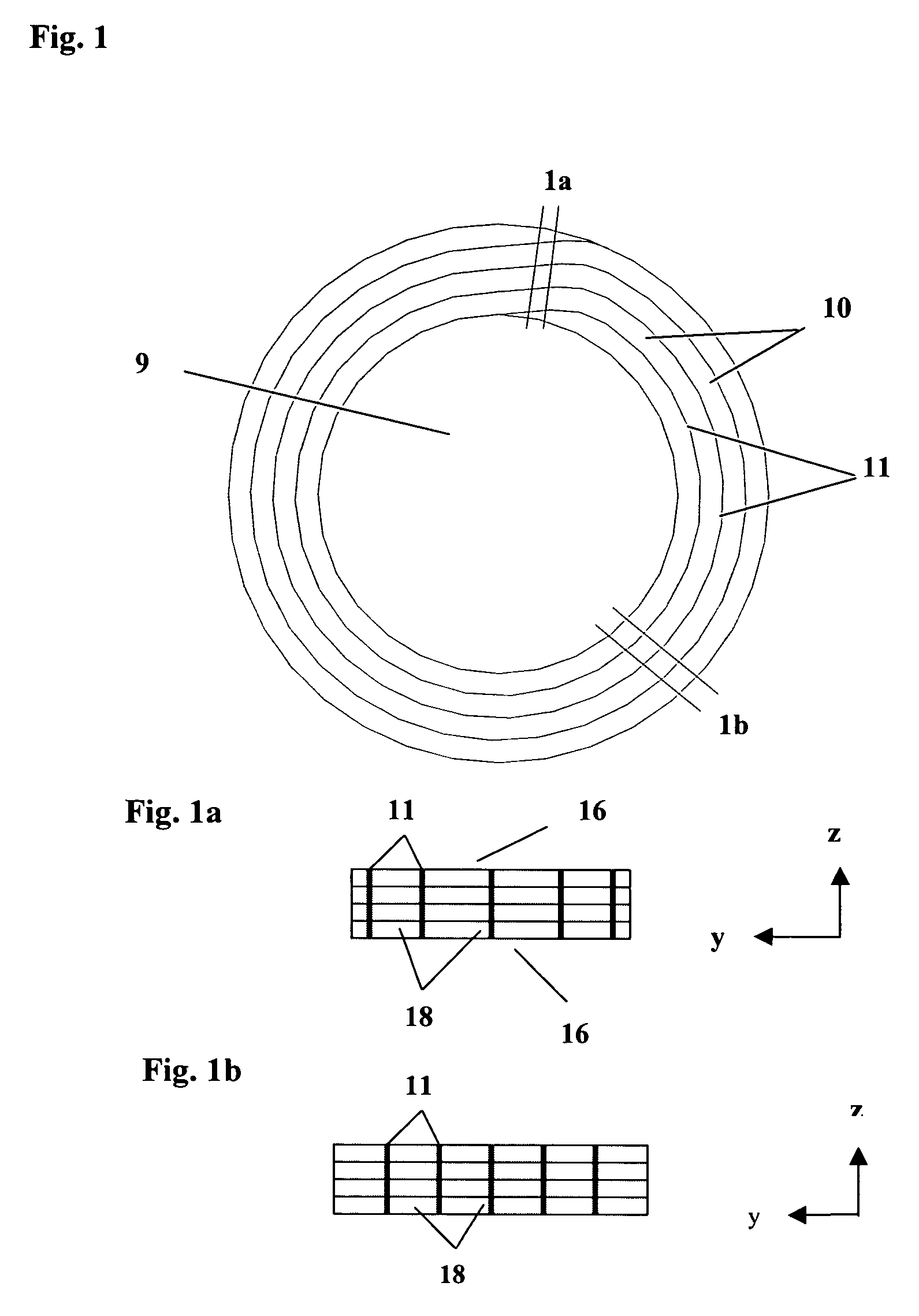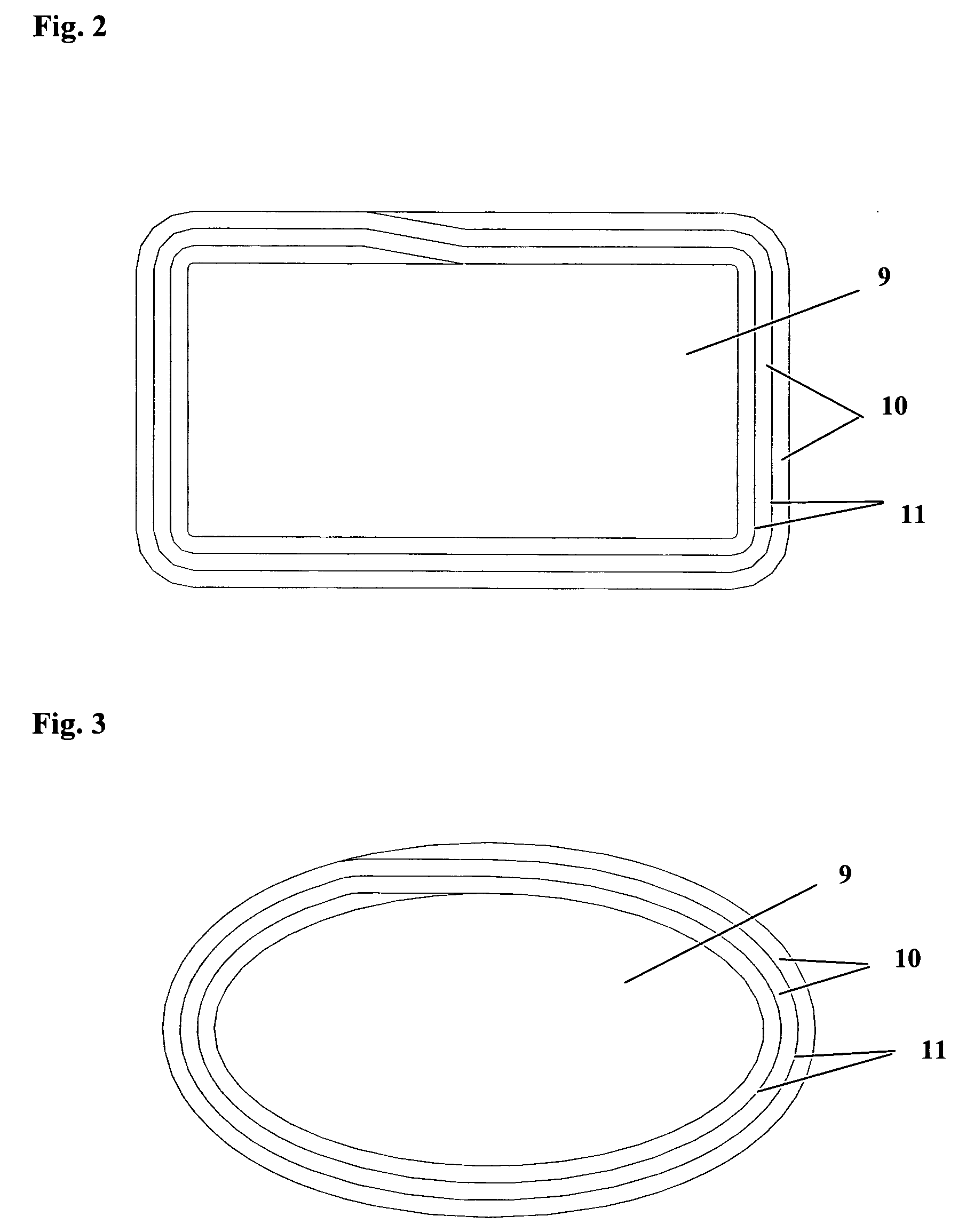Coil gasket
a gasket and coil technology, applied in the field of gaskets, can solve the problems of large amount of unevenness or lack of flatness associated with the flange, non-porous ptfe gaskets are generally not conformable enough to effectively seal this type of equipment, and non-porous ptfe gaskets are generally not conformable enough to provide an adequate seal, etc., to achieve the effect of reducing leakage rates
- Summary
- Abstract
- Description
- Claims
- Application Information
AI Technical Summary
Benefits of technology
Problems solved by technology
Method used
Image
Examples
example 1
[0052] An ePTFE / PFA coil gasket of the present invention was produced in the following manner.
[0053] A length of approximately 6 meters (20 feet) of Gore-Tex® Series 600 Gasket Tape (ePTFE tape) having a nominal width of approximately 10 mm (0.39 inches) and a nominal thickness of approximately 6 mm (0.23 inches) was obtained from W.L. Gore & Associates, Inc. of Newark, Del. A Teflon® PFA Film, Type LP having a width of approximately 13 mm (0.5 inches) and a thickness of approximately 0.025 mm (0.001 inches) was obtained from E.I. du Pont de Nemours, Inc. of Wilmington, Del.
[0054] The PFA film was welded to the two side surfaces of the ePTFE tape along the entire length of the ePTFE tape. The PFA film was welded to the first side surface of the ePTFE tape using a hot press substantially similar to the press illustrated in FIG. 6 with upper press platen 61 heated to about 375° C. and the lower press platen 62 kept at ambient temperature. The upper and lower press platens 61 and 62 ...
example 2
[0057] An ePTFE / PFA composite coil gasket of the present invention was produced substantially according to the procedures described in Example 1.
[0058] The gasket was trimmed to final inner and outer diameter dimensions of about 220 mm (8.66 inches) and about 273 mm (10.75 inches). The gasket had a final thickness of about 6.9 mm (0.27 inches) and a mass of approximately 138 g. The composite gasket made according to this example was tested for sealability in accordance with the procedures of the Sealability Test described herein. The results can be seen in FIG. 8.
example 3
[0059] An ePTFE / PFA composite coil gasket of the present invention was produced substantially according to the procedures described in Example 1.
[0060] The gasket was trimmed to final inner and outer diameter dimensions of about 220 mm (8.66 inches) and about 273 mm (10.75 inches). The gasket had a final thickness of about 6.6 mm (0.26 inches) and a mass of approximately 106 g. The composite gasket made according to this example was tested for sealability in accordance with the procedures of the Sealability Test described herein. The results can be seen in FIG. 8.
PUM
| Property | Measurement | Unit |
|---|---|---|
| Density | aaaaa | aaaaa |
| Density | aaaaa | aaaaa |
| Density | aaaaa | aaaaa |
Abstract
Description
Claims
Application Information
 Login to View More
Login to View More - R&D
- Intellectual Property
- Life Sciences
- Materials
- Tech Scout
- Unparalleled Data Quality
- Higher Quality Content
- 60% Fewer Hallucinations
Browse by: Latest US Patents, China's latest patents, Technical Efficacy Thesaurus, Application Domain, Technology Topic, Popular Technical Reports.
© 2025 PatSnap. All rights reserved.Legal|Privacy policy|Modern Slavery Act Transparency Statement|Sitemap|About US| Contact US: help@patsnap.com



